In 1972, President Richard Nixon was on the hot seat for election shenanigans, nerdy American Bobby Fischer soundly defeated a Russian chess master, and movie-goers had a front-row seat to a bloody Mafia war in the classic flick “The Godfather”.
Something else quite memorable happened 50 years ago: rock and roll kicked serious ass.
During the early ’70s, rock music wildly spun off in new and different directions: glam rock, country rock, prog rock, blues rock, heavy metal, jazz rock, and other forms of a musical genre that energized a generation of youth rebelling against anything that reeked of The Establishment.
Unfortunately, today’s bands carrying the torch of the ’70s-era tradition, like retro-rockers Allman-Betts Band, The Black Crowes, Tedeschi-Trucks band, and Gretta Van Fleet, are overshadowed by literally hundreds of beat-heavy, EDM-driven pop divas and hip-hoppers flouting their glamorous lifestyles while raking in fortunes with auto-tuned, overprocessed music. Back in the ’70s, rock bands didn’t need dazzling light shows, choreographic dance moves, or more talented musicians hidden away to fill out a band’s sound. What ’70s bands did have was a pure raw talent that remains fresh in the otherwise cloudy memories of those fans who were there.
It’s highly doubtful that most of the output of the current generation of bands and solo artists will have as much, if any, staying power 50 years from now as those mentioned in the list below. During the course of our research, the phrase “the ’70s was the greatest era for music” repeatedly popped up. I wholeheartedly agree as a great deal of today’s precision-tuned music isn’t rock but reflective of our technology-driven culture: efficient, convenient, and highly disposable.
As for this list, there will unquestionably be those who will complain loudly that other bands ought to be included in the Class of ’72. They have a point: so many great albums were released that year that it was difficult to decide which would make the cut. But one has to draw the line somewhere, so hopefully, most will agree with these selections. If not, feel free to write your own blog on this topic. And as an added bonus, video clips of one of the albums’ songs are posted here. Please note that some of the videos’ production values are not on the same par as those created in later decades and, in some instances, it was necessary to use videos of ’72 songs made years later. Remember, it was a rare occasion that someone filmed live concerts or made decent videos 50 years ago. In ’72, smartphone cameras weren’t even a blink in Steve Job’s eye.
And now, without further adieu, let’s take a look at those bands and solo artists whose contributions that year made an indelible stamp on rock ‘n roll. Drum roll, please:
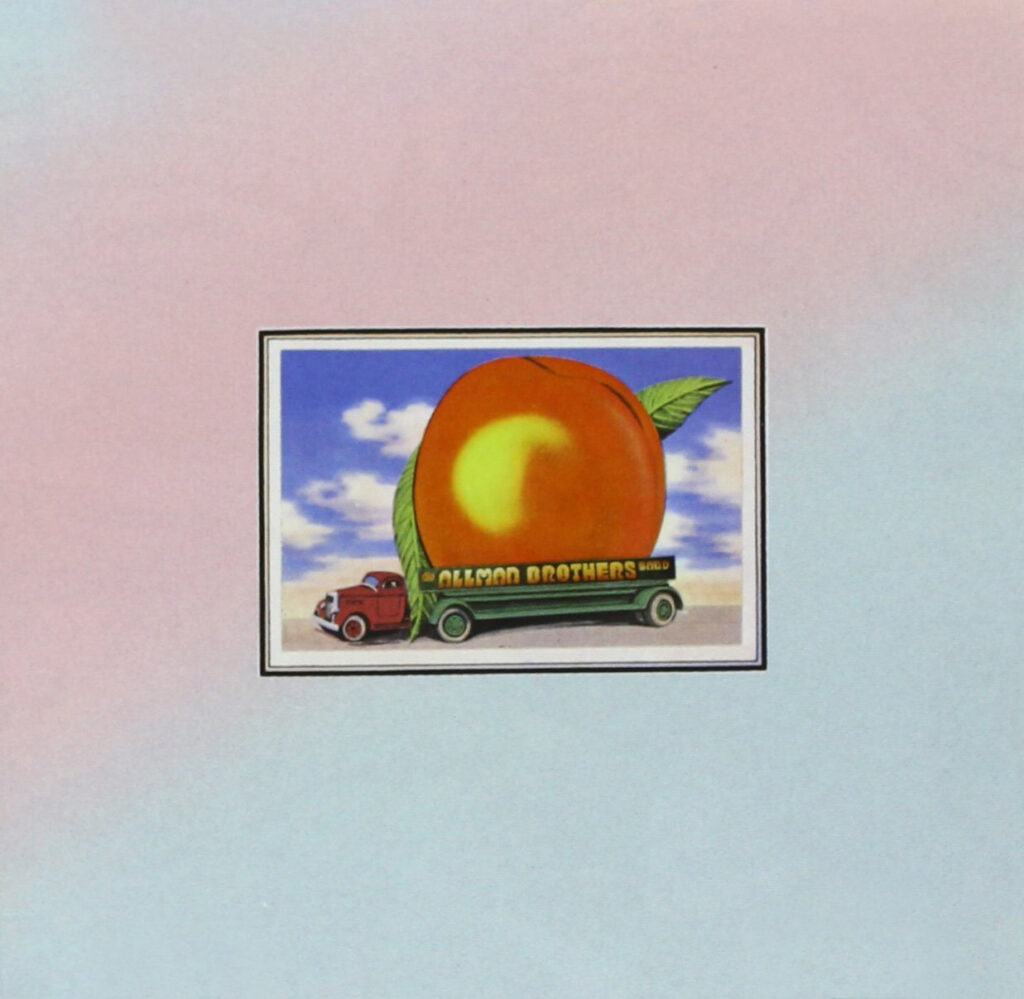
Following its groundbreaking live album “Fillmore East Live”, the Allman Brothers Band went back into the studio to produce the last ABB album that the band’s founder and guitarist Duane “Skydog” Allman would record. Allman, who tragically died in a motorcycle crash at the age of 24 in Macon, Ga., worked on the album with his brother and vocalist/keyboardist Gregg, and bandmates guitarist Dickie Betts. Berry Oakley (who also died in a Macon motorcycle accident a year after Allman’s untimely death), and drummers Butch Trucks and “Jaimoe” Johanny Johanson. The band elevated blues-rock to new heights in the early ’70s and popularized extended jams that gave rise to the Southern rock era (Gregg Allman hated that label, preferring to just call it rock). The “Eat a Peach” album was a tribute to Duane, whose masterful slide guitar and “guitarmonics” with Betts would launch a thousand guitar-driven bands in the ’70s and beyond. Also during this period, Duane was a highly sought-after session player who recorded with the top artists including Aretha Franklin, Wilson Pickett, to name a few. And one of his best non-ABB output was his contribution to Eric Clapton’s band Derek & The Dominoes (Allman was not a member of the tour but did join the band for two concerts in Tampa, Fla., and Syracuse, NY). As for “Eat A Peach”, it was a compilation of live recordings from the Fillmore East gig (“One Way Out”, “Trouble No More” and “Mountain Jam” interspersed with studio-produced gems like “Blue Sky (a beautiful country-tinged precursor to the band’s album “Brothers & Sisters”), “Ain’t Wasting Time No More” and the hauntingly melodic “Melissa”. The album closes with the acoustic guitar instrumental “Little Martha”, a farewell from Duane, displaying a side of his genius that was rarely heard on the band’s albums. Video clip:
Little Known Fact: Derek & The Dominoes’ “Layla and Other Assorted Love Songs” may not have ever been made if not for the take-charge abilities of Duane Allman, who was invited to play with the band after Clapton witnessed one of ABB’s jaw-dropping performances. The story goes that when Allman showed up at the recording studio, he gazed around the room and saw Clapton and his bandmates hanging around in a drug stupor. Allman, who had a no-nonsense approach to band leadership, kicked the band into high gear that eventually led to one of rockdom’s greatest gifts.
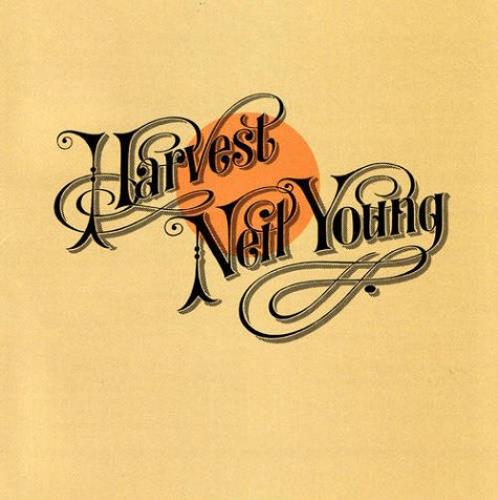
Neil Young’s decision to release the laid-back country-rock album “Harvest” had something to do with his physical condition at the time. In an interview with Rolling Stone magazine, the Canadian-born rocker recorded most of the album wearing a back brace, which prevented him from playing electric guitar (at least standing up). Despite his infirmity, Young, who could transcend musical styles — from coffeehouse folkie to punk/grunge antagonist — with little effort — recorded a classic rock album that is still as musically relevant as it was 50 years ago. Besides the Top 40 hit “Heart of Gold”, the album’s other tracks reinforced Young’s growing reputation as a force to reckon with, recording songs like “Old Man” (about the caretaker of his California ranch), “The Needle and The Damage Done” (an ode to the heroin-related death of Crazy Horse bandmember Danny Whitten), and “Alabama” (another not-so-subtle swipe at Red states). For this album, Young recruited some top-notched session players and pals David Crosby, Graham Nash, Stephen Stills, James Taylor, and Linda Ronstadt on backup vocals. Video clip:
Little Known Fact: During production, Young had an interesting way of telling whether the album’s sound quality was at the right level. Young and Graham Nash jumped into a rowboat and steered it to the middle of a lake on his property. Nash thought Young wanted to play the album for him while seated in the boat. But Young had another idea: he had installed two giant loudspeakers, one in his house and the other in a nearby barn, to play the album while the two sat motionless in the boat. When the producer began playing the music over the speakers, he asked. “How’s that sound?” Young shouted back: “More barn.”
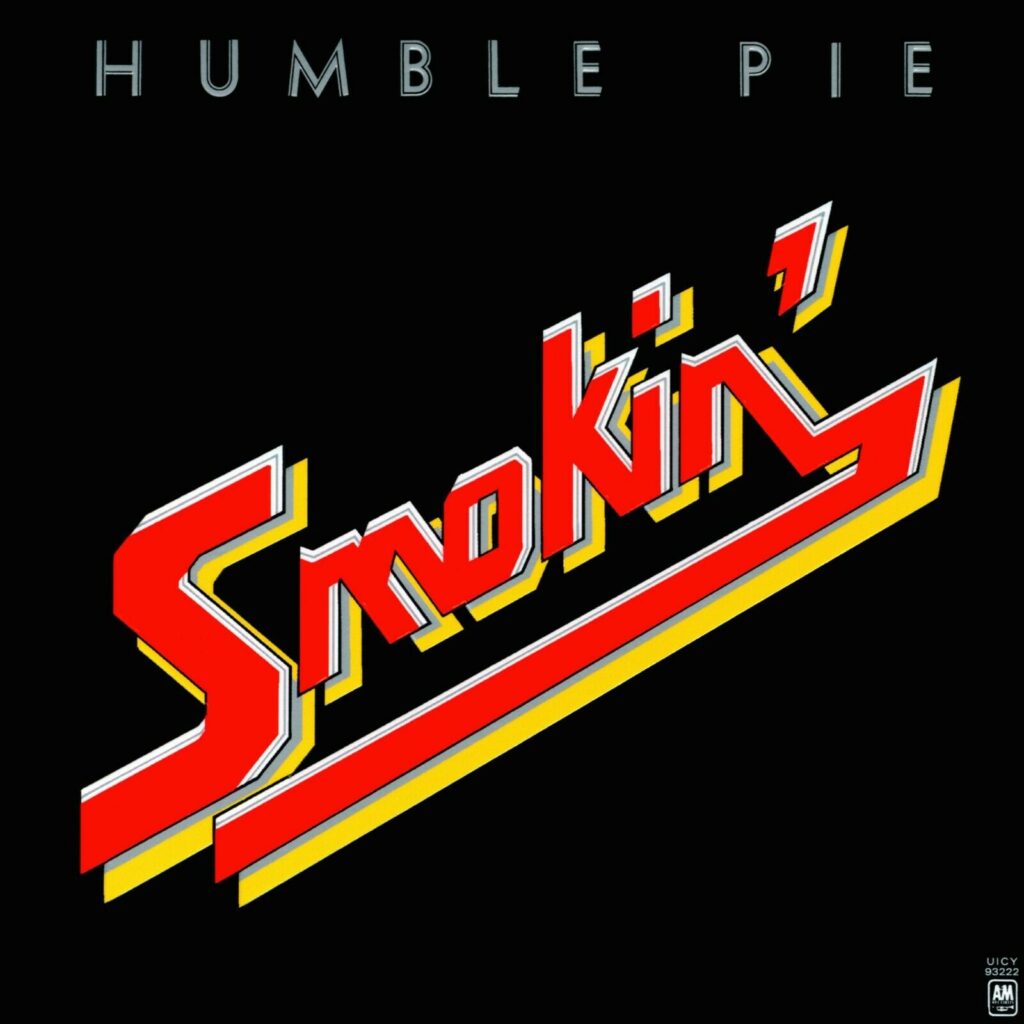
On the heels of its smash double live album “Humble Pie Performance: Rockin’ the Fillmore”, this British boogie-rock band released its fifth studio album called “Smokin”– and it did just that. Former Small Faces frontman Steve Marriott proved his band didn’t need singer-guitarist Peter Frampton — who left the band to begin a mega-successful solo career — to expand its fan base. Marriott was one of the Big Voices of rock, like Mick Jagger and Joe Cocker, whose pipes didn’t just complement the rest of the band; it made the band. Marriott’s soulful singing style was perfectly suited for the band’s R&B-influenced songs and straight-ahead rockers. Tracks from “Smokin” like “30 Days in the Hole”, “Hot and Nasty”, and the shake-your-ass stomper “C’mon Everybody” blasted from FM radios, turntables and eight-track players back in the day. And it’s no coincidence that The Black Crowe’s Chris Robinson has been compared to Marriott — both vocally and stage persona. Unfortunately, the band’s later output didn’t even come close to matching the intensity of “Smokin”. Unable to follow up on the success of that album, the band called it quits. Marriott never got a chance to stage a successful comeback: he perished in a house fire on April 20, 1991. Video clip:
Little Known Fact: Stephen Stills played organ on one of the album’s tracks.
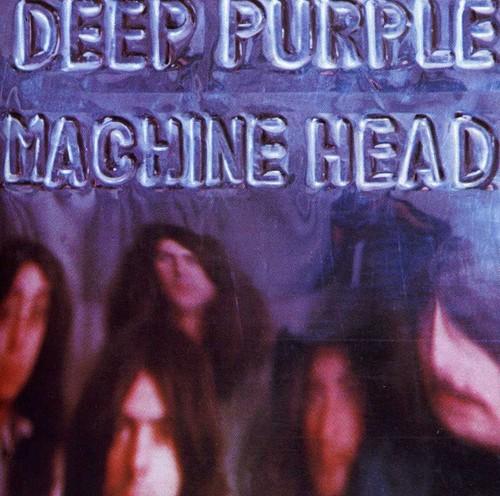
When I was 15, I landed a summer job working at my brother-in-law’s company: a wholesale record distributor in Milwaukee, a dream-come-true for a rock music-starved adolescent. One day, a fellow worker opened up a box of records and pulled out British rock band Deep Purple’s latest LP “Machine Head”. He turned around, holding the album inches from my face, and said: “Hey, man, you gotta hear this album. It will blow you away.” Well, I did, and it did, sort of. Until that day, my only familiarity with the band was its cover of a Billy Joe Royal song called “Hush”, a ’60s country-pop tune that Deep Purple turned into a darker song with a psychedelic groove. If you are unfamiliar with “Machine Head”, you certainly had heard of the band’s biggest hit on the album “Smoke on the Water” which contains one of the most famous riffs in rock music and was once played by every beginning guitarist. During this time, heavy metal was in vogue, with bands like Black Sabbath, Alice Cooper and others taking center stage in rock music. Deep Purple was no exception, cranking up its instruments to maximum overdrive that earned them the title as “The Loudest Rock ‘n Roll Band in the World” The album’s other hits “Highway Star” and “Space Truckin” also got a decent amount of airplay and are still played, along with “Smoke on the Water”, on classic rock radio stations. The album’s other tracks, however, are self-indulgent and forgettable. Following “Machine Head’s release, the band underwent umpteen personnel changes that eventually diluted the band’s creativity and vision (with the exception of “Come Taste The Band” featuring late guitar wizard Tommy Bolin), resulting in one of the biggest rock bands in the world becoming a shadow of its former self. Video clip:
Little Known Fact: While the band was recording “Machine Head” at the Grand Hotel in Montreaux, Switzerland, a nearby casino located near Lake Geneva had burned to the ground. Deep Purple members watched as the smoke from the burning casino drifted over the lake. Hence, the inspiration for the band’s song “Smoke on the Water”.
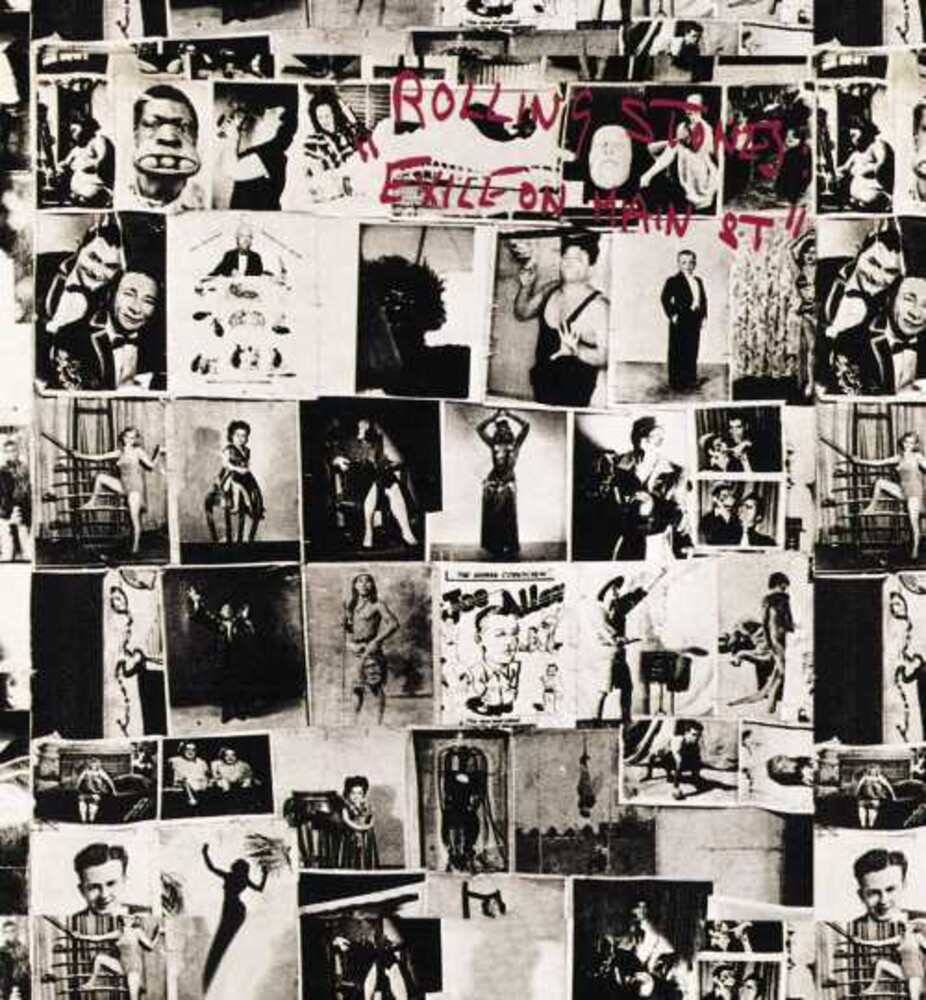
The Rolling Stones’ “Exile on Main Street” is arguably the band’s best work, a mix of rock, country, blues, and African music that gave credence to the band’s marketing hype as “The World’s Great Rock ‘n Roll Band”. Prior to the recording of this album, the band was moving in this direction with the release of “Sticky Fingers”, a powerful collection of songs including hard-driving rockers like “Brown Sugar”, “Bitch” and “Sway”, the upbeat country toe-tapper “Dead Flowers” and the slow, mournful ballads of “Wild Horses” and “Sister Morphine”. The Stones’ early ’70s output was given a big helping hand from guitar phenom Mick Taylor, recruited from John Mayall’s finishing school of British blues-rock guitarists that included Eric Clapton and Peter Green, and the killer horn section of Bobby Keys and Jim Price, who also toured with Delaney & Bonnie, among others. This same lineup, along with keyboard legends Billy Preston and Nicky Hopkins, pushed “Exile on Main Street” to the top of radio playlists with numbers such as “Tumbling Dice” (later covered by Linda Rondstadt), “Rocks Off” and Keith Richards’ confident lead vocals on “Happy”. While the album was hailed as an artistic success by critics and fans alike, it marked the beginning of a long slide in the Stones’ fabled career, marred by their heavy drug use and internal squabbles. After “Exile on Main Street”, the Stones failed to regain the momentum of their former glory, with the possible exception of “Some Girls”. True, the Stones still make gazillions of dollars from sold-out arena tours, but like other bands who flourished in the ’60s and ’70s, the Stones are chained to their past and no longer seem to care or are too tired to move the needle forward on rock ‘n roll. Video clip:
Little Known Fact: The Stones recorded “Exile on Main Street” in a French villa that once housed a Nazi Gestapo operation.
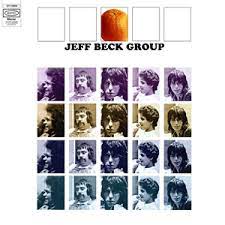
Following the breakup of the first Jeff Beck Group (featuring Rod Stewart and ex-Faces and current Rolling Stones guitarist Ronnie Wood), Beck shifted his musical gears (which he would do frequently in his long career) that infused rock with R&B. To do so, the British guitar virtuoso recruited “A” list musicians for his band’s second iteration. The band members included vocalist Bob Tench, bassist Clive Chaman, keyboardist Max Middleton, and drummer Cozy Powell (who bore a striking resemblance to Beck) who later joined Ritchie Blackmore’s group Rainbow and Black Sabbath. The band’s first album “Rough and Ready” received mixed reviews and failed to chart a hit single, although the album presented a new platform for Beck’s guitar prowess that some would declare as his career finest. The band’s second album referred to as the “Orange” album (see album image) followed in a similar vein but with Memphis-heavy arrangements, courtesy of producer Steve Cropper, a member of Stax recording artist Booker T. & the MGs and prolific session musician. The album’s top hit was the Don Nix cover “Goin Down”, which has been covered by Stevie Ray Vaughan and scores of other bands. In this song, Beck pulls out all of the stops, unleashing a fiery display of guitar pyrotechnics, a unique style that has deservedly earned him a spot on the Mount Rushmore of rock guitarists. “Ice Cream Cakes” also launches a salvo of Beckian fireworks but is dragged down by weak vocals. Other cuts on the album include R&B covers that don’t quite measure up to the originals but are saved by Beck’s fretwork. While the album was panned by critics and received very little airplay, it marked the jumping-off point for Beck, returning to hard rock (Beck, Bogart and Appice) and later spreading out to jazz rock and other rock hybrids. All and all, this album played an important role in the guitarist’s growth and his contribution to rock guitar that influenced a coming generation of guitar slingers. Video clip:
Little Known Fact: The first Jeff Beck Group unexpectedly pulled out of a scheduled performance at the ’69 Woodstock festival. The reason depends on who you believe. Beck says it was because the band wasn’t ready to perform in front of hundreds of thousands of people. But the band’s vocalist Rod Stewart claims that Beck ditched Woodstock Nation because he wanted to go back to London to patch up a rocky relationship with his girlfriend. Whatever the reason, Beck went on to form his next lineup for the group, giving Stewart the opportunity to pursue a highly successful career as a solo artist and lead singer for the Faces, replacing Steve Marriott who formed Humble Pie.
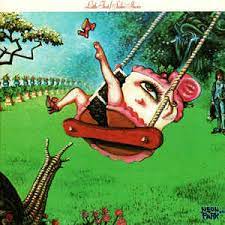
Little Feat’s second studio album “Sailin’ Shoes” silenced its harshest critics about the band’s ability to make songs that mattered. Labeled as Southern rock, boogie rock and blues rock, this LA-based band defied description, and rightfully so. Co-founder Lowell George learned from his former boss, Frank Zappa, never to make music that can be easily classified. On ‘Sailin’ Shoes”, the band cooked up a delicious rock ‘n roll stew ranging from radio-friendly “Easy to Slip” to country-rock singalong “Willin” to full-steam-ahead rocker “Tripe Face Boogie”. This album attracted legions of fans including big-time rockers like Bob Weir and Gregg Allman, both of who covered the band’s songs. Following the death of George in the latter part of the decade, the band had its ups and downs like any rock band of consequence. But it was “Sailin’ Shoes” that charted the course for Little Feat to follow in the decades ahead. Video clip:
Little Known Fact – Actually, there are two little-known facts about Little Feat. The first one is to take a close look at the figure standing in the background. You might need a magnifying glass to identify this person, but it’s none other than Mick Jagger dressed up as “The Blue Boy” depicted in Thomas Gainsborough’s famous painting. The second one is how Little Feat got its name. When George was a member of Zappa’s Mothers of Invention, Zappa told George to quit the band and go out and make a name for himself. George agreed and decided the name of the band would be a slightly modified description of part of his anatomy. The story goes that Zappa or someone else in the Mothers commented that George had little ***expletive deleted*** feet. George swapped out the second “e” in feet for an “a”, and the rest is, as they say, is history.
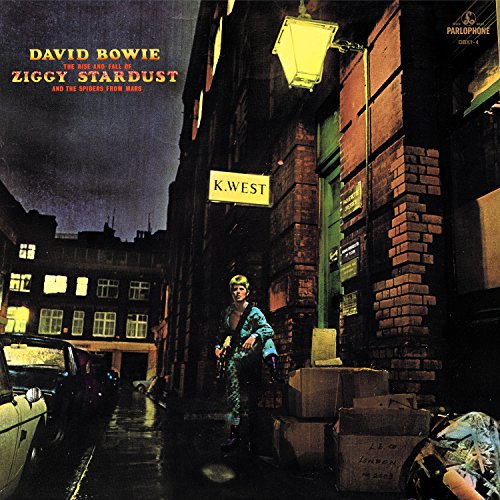
David Bowie’s fifth studio album introduced his most famous alter ego Ziggy Stardust, an alien being whose sole mission was to bring the message of rock ‘n roll to us mere mortals. Bowie’s other-worldly persona was more than a new musical phenomenon; it was an outgrowth of a cultural revolution — much like the ’60s hippie movement and punk in the latter part of the ’70s. Glam rock was the soundtrack for a glittery and hedonistic lifestyle, casting aside old conventions of rock ‘n roll. The innovators of the glam-rock scene, like Bowie, Lou Reed, T. Rex’s Marc Bolan, the New York Dolls and others, lived and breathed in an alternate rock ‘n roll universe, combining high-fashion, androgynous and bisexual identities, and sometimes weird but fascinating exploration of the genre. The iconoclastic Bowie saw the future of rock ‘n roll: a hot mess of soaring rock anthems and highly visual entertainment. But at its most basic level, despite all the glam-rock trappings, “The Rise and Fall of Ziggy Stardust” rocks with the best of them. From the tender acoustic numbers of “Five Years” and “Star Man” to Bowie’s power-rock vocals and Mick Ronson’s incendiary guitar chops on “Ziggy Stardust” and “Suffragette City (“wham-bam-thank you, ma’am), The Rise and Fall of Ziggy Stardust” was a mission accomplished. Video clip:
Little Known Fact: David Bowie was the singer’s stage name. His real name was Davy Jones but was forced to change it to avoid confusion with the singer with The Monkees who had the same name.
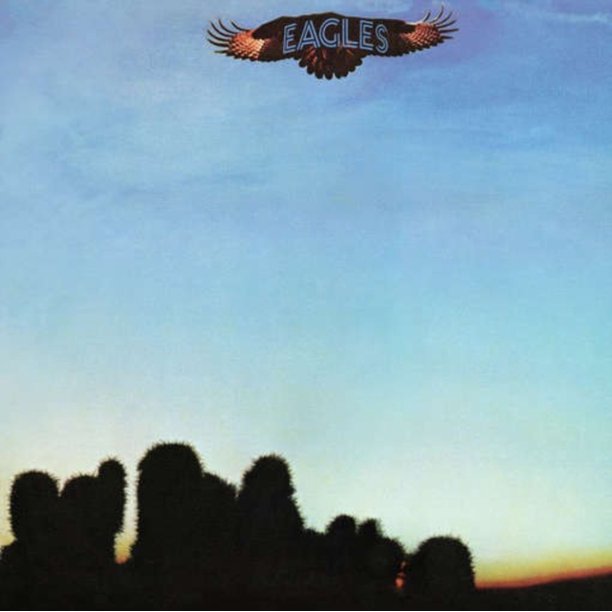
In the early ’70s, country rock was on a roll. Ushered in by bands like The Byrds, Buffalo Springfield and Crosby Stills Nash & Young, turntables were spinning with the likes of the aforementioned bands and newcomers such as Poco, James Taylor, Jackson Browne, Gram Parsons, Linda Rondstadt, Emmylou Harris and others who had populated this rock hybrid. Then, almost out of the blue, a southern California band called The Eagles soared high among the crowd. Band members Glenn Frey, Don Henley, Randy Meisner and Bernie Leadon (former members of Rondstadt’s backup band) went into the studio to record its debut album –a mix of rock, folk and country that produced now-classic rock hits “Take It Easy”, “Peaceful Easy Feeling” and “Witchy Woman”. The band’s masterful songwriting, pitch-perfect harmonies and flawless production propelled this album to the top of the rock/pop charts which led to the Eagles becoming one of the world’s best-selling bands. On later albums, the band recruited guitarist Don Felder, ex-James Gang singer-guitarist and solo artist Joe Walsh and Poco bassist/vocalist Timothy B. Schmidt. Video clip:
Little-Known Fact: The Eagles guitarist Bernie Leadon coined the band’s name while high on peyote in the Mojave desert.
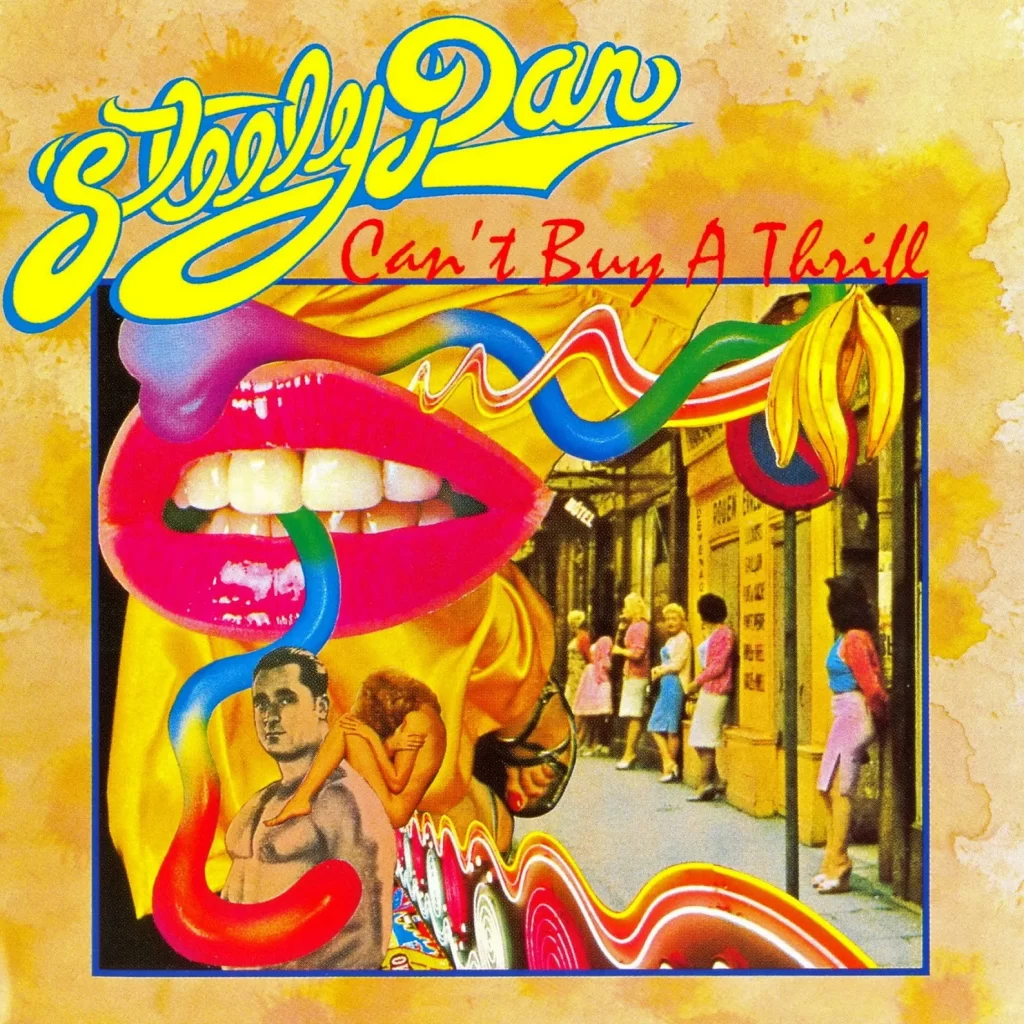
When Steely Dan released its debut album “Can’t Buy A Thrill”, music critics weren’t sure how to respond to the band. At that time, glam rock was the flavor of the moment, taking rock music to its next incarnation. Even the majestical Stones hitched its wagon to glam rock with its tepid “Goats Head Soup”. Then, along comes two New Yorkers Donald Fagen and Walter Becker, who were once part of the touring band for ’60s pop band Jay and The Americans. Fagen and Becker, along with crack session musicians, fused a big band sound with rock, jazz, R&B, Latin, and blues. The outcome was the beginning of highly polished music and witty lyrics that would define the band for years to come. However, in the age of glam, Fagen and Becker were outcasts because they didn’t subscribe to the latest musical trend. A music critic for the Los Angeles Times described the Dan as “a bunch of car mechanics who had somehow wandered on the stage of Whiskey a Go-Go.” The release of “Can’t Buy A Thrill”, however, became a commercial success with songs like the guitar-driven “Reelin’ in the Years” (featuring Elliott Randall, one of rock’s most underrated guitarists), “Do It Again”, and “Dirty Work”. This album and in later works, including the all-time classic “Aja”, weren’t just thrown together in a few days. Fagen and Becker were obsessed with perfection, requiring session players to be at the top of their game if they wanted to become part of the Steely Dan legacy. For example, on the song “Peg” on the “Aja” album, the guitar solo was attempted by seven of the industry’s best session players, including jazz-rock guitarists Larry Carlton and Robben Ford. The band finally settled on the version offered by guitarist Jay Graydon, who had to play the same solo over and over again for six hours before it met the approval of Fagen and Becker. Video clip:
Little Known Fact: The band’s moniker was named after a sexual apparatus in William S. Burrough’s novel “Naked Lunch”.
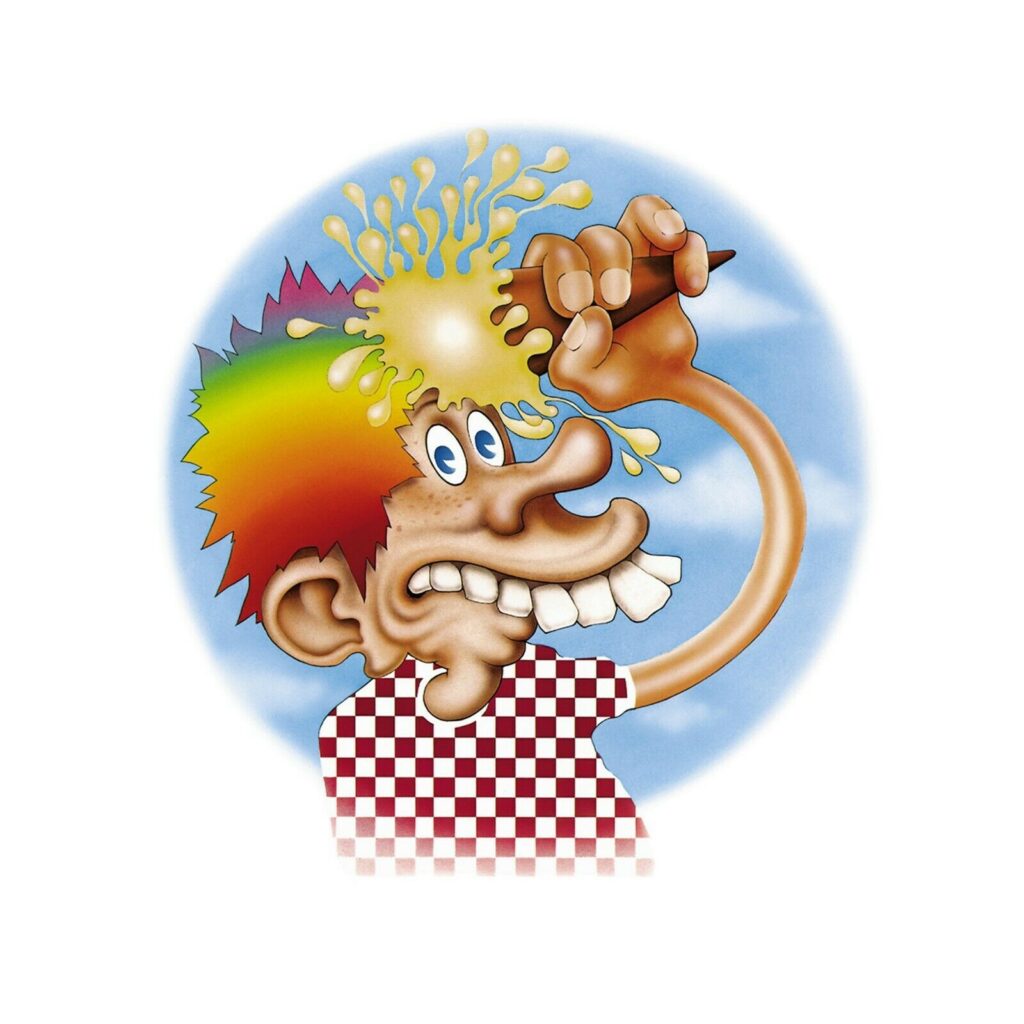
Following the Grateful Dead’s 1971 live album “Skull and Roses”, the band rolled out another live album “Europe ’72”, a highly inspired collection of old and new songs the band performed during the course of its 22 shows across the pond. The Dead played favorites such as “I Know You Rider”, “One More Saturday Night” and “Sugar Magnolia” and added new ones to its setlist including “Brown-Eyed Woman” and “Jack Straw”. During the tour, it has been reported that singer/guitarist Jerry Garcia was so emotionally choked up during the song “Morning Dew” that he turned his back to the audience to hide tears streaming down his face. That version is reputed to be the best along with other versions performed at the Dead’s 5-8-77 and 10-12-84 shows. Video clip:
Little Known Fact: The iconic Ice Cream Kid featured on the album’s cover is said to be a sly reference to the band’s hallucinogenic-fueled tour across Europe. The red squares on the shirt are the exact size of a tab of acid. Coincidence? Think not.
Honorable Mentions
Joni Mitchell, “For The Roses”, Cat Stevens, “Catch Bull at Four”, Doobie Brothers, “Toulouse Street”, Roxy Music, “Roxy Music”, Lou Reed, “Transformer”, Jethro Tull, “Thick as a Brick”, Stevie Wonder, “Talking Book”, Todd Rundgren, “Something/Anything”.

I blog often and I really thank you for your content.
This great article has truly peaked my interest.
I’m going to book mark your website and keep checking for new
details about once per week. I subscribed to your Feed as well.